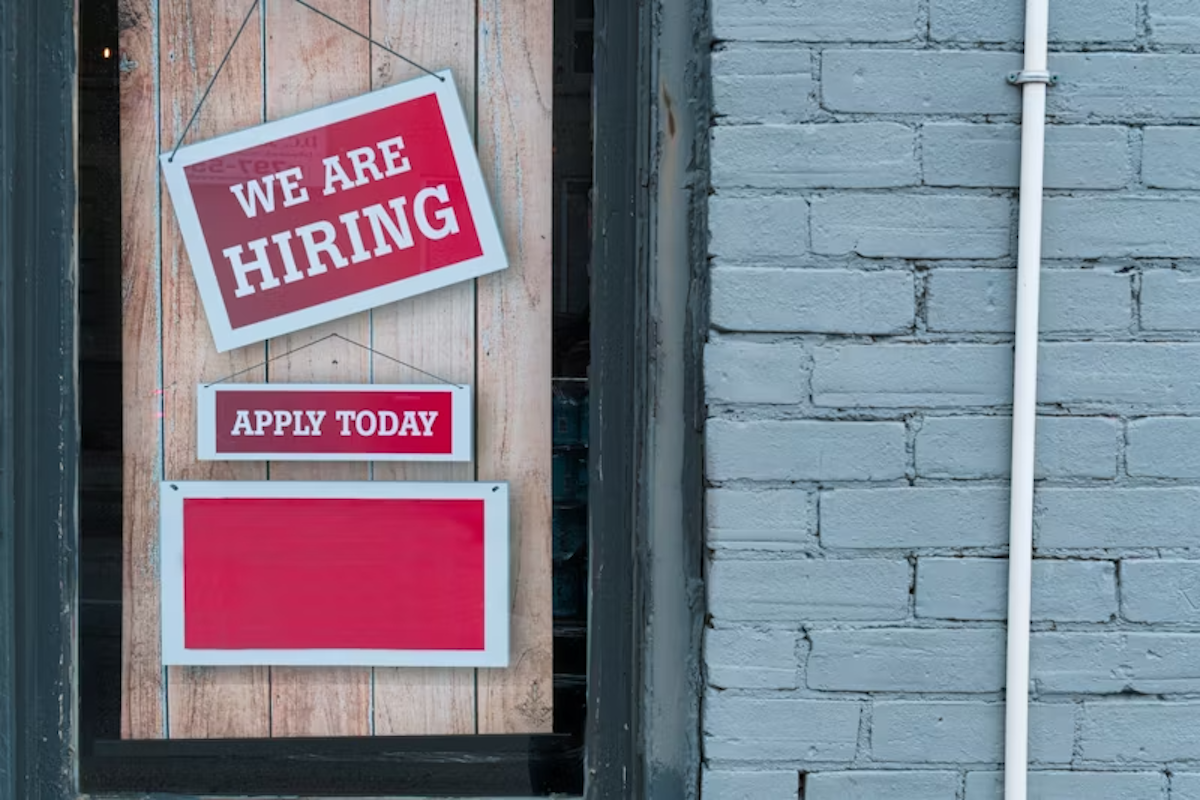The 2025 Restaurant Labor Shortage and How It Affects You
Staffing challenges in restaurants and c-stores aren't new—but as of 2025, they're shifting in ways that call for sharp thinking and adaptable...
Platform
Combining online ordering, loyalty, omnichannel messaging, AI insights, and payments in one platform. Paytronix delivers relevant, personal experiences, at scale, that help improve your entire digital marketing funnel by creating amazing frictionless experiences.
A Complete Customer Experience Platform
Online Ordering
Acquire new customers and capture valuable data with industry leading customization features.
Loyalty
Encourage more visits and higher spend with personalized promotions based on individual activity and preferences.
Catering
Grow your revenue, streamline operations, and expand your audience with a suite of catering tools.
CRM
Build great customer relationships with relevant personal omnichannel campaigns delivered at scale.
Artificial Intelligence
Leverage the most data from the most customer transactions to power 1:1 marketing campaigns and drive revenue.
Payments
Drive brand engagement by providing fast, frictionless guest payments.
Solutions
We use data, customer experience expertise, and technology to solve everyday restaurant and convenience store challenges.
Contactless Experiences
Accommodate your guests' changing preferences by providing safe, efficient service whether dining-in or taking out.
Customer Insights
Collect guest data and analyze behaviors to develop powerful targeted campaigns that produce amazing results.
Marketing Automation
Create and test campaigns across channels and segments to drive loyalty, incremental visits, and additional revenue.
Mobile Experiences
Provide convenient access to your brand, menus and loyalty program to drive retention with a branded or custom app.
Subscriptions
Create a frictionless, fun way to reward your most loyal customers for frequent visits and purchases while normalizing revenues.
Employee Dining
Attract and retain your employees with dollar value or percentage-based incentives and tiered benefits.
Order Experience Builder
Create powerful interactive, and appealing online menus that attract and acquire new customers simply and easily.
Loyalty Programs
High-impact customizable programs that increase spend, visit, and engagement with your brand.
Online Ordering
Maximize first-party digital sales with an exceptional guest experience.
Integrations
Launch your programs with more than 450 existing integrations.
Loyalty Programs
Deliver the same care you do in person with all your digital engagements.
Online Ordering
Drive more first-party orders and make it easy for your crew.
Loyalty Programs
Digital transformations start here - get to know your guests.
Online Ordering
Add a whole new sales channel to grow your business - digital ordering is in your future.
Integrations
We work with your environment - check it out.
Company
We are here to help clients build their businesses by delivering amazing experiences for their guests.
Meet The Team
Our exceptional customer engagement innovations are delivered by a team of extraordinary people.
News/Press
A collection of press and media about our innovations, customers, and people.
Events
A schedule of upcoming tradeshows, conferences, and events that we will participate in.
Careers
Support
Paytronix Login
Order & Delivery Login
Resources
Learn how to create great customer experiences with our free eBooks, webinars, articles, case studies, and customer interviews.
FlightPaths are structured Paytronix software onboarding journeys designed to simplify implementation and deliver maximum ROI.
See Our Product In Action
E-Books
Learn more about topics important to the restaurant and c-store customer experience.
Reports
See how your brand stacks up against industry benchmarks, analysis, and research.
Blog
Catch up with our team of in-house experts for quick articles to help your business.
Case Studies
Learn how brands have used the Paytronix platform to increase revenue and engage with guests.
Have you overlooked any of these 16 crucial steps for your catering business?
6 min read
Apr 11, 2025

Staffing challenges in restaurants and c-stores aren't new—but as of 2025, they're shifting in ways that call for sharp thinking and adaptable strategies. As the restaurant industry continues to rebound from the pandemic and navigate economic pressures like inflation, the ongoing labor shortage is reshaping how restaurants operate and grow.
Beyond the numbers, businesses are facing a mix of realities: high turnover, strong competition for talent, evolving employee expectations, and changes in customer behavior. Together, these trends are transforming the hiring landscape. They also open the door to investing in employee retention programs and reevaluating wages and benefits.
According to a National Restaurant Association survey, bars and eateries lost a net 25,500 jobs in the first quarter of 2025—the lowest quarterly performance since late 2020, when the industry shed more than 266,000 jobs. Despite this rocky start, the restaurant industry is still projected to grow by 200,000 jobs this year, reaching a total of 15.9 million employees by the end of 2025.
This article explores the labor shortage in the food and beverage industry, its impact, and strategies for your business to navigate and overcome workforce challenges.
A labor shortage in the restaurant industry is influenced by factors such as economic shifts, rising wage expectations, and changing work-life balance. In recent years, these challenges have intensified, creating a tighter labor market.
Today, restaurants around the world must adapt to a shrinking labor pool. They are focusing on wage growth, benefits, and adjusting job expectations. Inflation also plays a key role, as it affects consumer purchasing power. As people spend less, restaurants must balance cost-effective pricing with the need to attract talent and retain employees. Consumers are seeking value, putting pressure on restaurants to offer quality service, which requires skilled staff.
In this environment, restaurants must rethink compensation and invest in worker retention strategies to keep operations running smoothly.
The first quarter of 2025 showed mixed signals for restaurant employment. Nearly 30,000 jobs were regained in March, but the quarter still ended with a net loss of over 25,000 jobs—the most significant dip since 2020. Despite this, total employment in the industry remains slightly above pre-pandemic levels, and full-service restaurants are steadily narrowing the staffing gap, now just under 3% below pre-pandemic benchmarks.
Faced with the restaurant workforce fluctuations, several restaurant businesses are revisiting their approach to staffing. Flexible scheduling, retention-focused training, and investments in the employee experience are becoming key tools to stabilize operations. Others are testing smaller teams supported by automation and cross-training to meet service demands efficiently.
The workforce shortage in the restaurant industry persists in 2025, even as the broader economy recovers. The reasons go beyond just staffing numbers—it’s about a shift in how people approach work. Post-pandemic job market changes, rising interest in remote or flexible roles, and growing expectations for wages, benefits, and work-life balance have all played a part.
The effects vary across restaurant segments. Fast-casual restaurants often attract younger, part-time workers, while fine dining establishments rely on trained professionals. This means that each segment faces unique challenges—and will need tailored solutions.
With competition for talent rising, many restaurants are shifting to more flexible and creative compensation models. Some are moving beyond hourly rates, introducing performance-based bonuses or retention incentives to stand out. Minimum wage increases and evolving tip pooling regulations are also reshaping how operators budget for staffing—often prompting smaller businesses to adjust their hiring pace or raise menu prices.
Health insurance, paid time off, and mental wellness programs have become essentials. Offering these benefits can make the difference between attracting long-term talent and repeatedly starting from scratch.
Since COVID-19, sectors like healthcare, construction, transportation, retail, and travel have all reported significant workforce shortages. Each industry faces its own set of challenges, but in hospitality, the struggle to retain employees has proven especially tough due to irregular hours, lower wages, and high stress.
Restaurants are adopting strategies from retail and the broader hospitality industry to tackle workforce challenges. Practices like flexible scheduling, streamlined onboarding, and cross-training are proving effective in improving employee retention and engagement, while also helping to reduce turnover—critical in environments where staffing stability is key for smooth operations.
As a restaurant owner, you know that balancing talent retention with operational success is challenging. Maintaining profitability, keeping your team engaged, and ensuring customer satisfaction all require constant attention. If you're looking for actionable steps to improve hiring and retention, consider these four strategies:
New generations value opportunities for growth and a sense of being appreciated. By offering career advancement opportunities and leadership training, you can reduce turnover. Retention programs that foster loyalty also play a crucial role in keeping restaurant workers engaged and creating a stable workforce.
Several restaurants have succeeded by focusing on culture-building strategies. A positive work environment, clear communication, and opportunities for advancement can significantly boost long-term commitment and reduce the need for constant rehiring.
Technology plays an important role in reducing labor dependency within the restaurant industry. AI-powered scheduling systems can optimize staff allocation, while self-service kiosks and online ordering streamline customer interactions, allowing for fewer staff on the floor.
Additionally, automation in kitchen operations and inventory management improves efficiency, reducing human error and the need for manual labor. These technologies not only improve operational effectiveness but also allow restaurants to maintain high-quality service while addressing staffing shortages.
Restaurants are expanding their recruitment efforts to reach untapped talent pools, such as students, retirees, and gig workers, to address staffing shortages. Leveraging social media and digital platforms improves visibility and engagement for job openings.
Additionally, employee referral programs and sign-on bonuses serve as effective incentives, motivating current workers to recommend new hires and attracting fresh talent with competitive perks. These approaches help restaurants cast a wider net in an increasingly competitive job market.
Restaurant employees who feel aligned with a business's values and mission are more likely to stay long-term. Creating a culture of respect, recognition, and collaboration can foster employee loyalty and improve morale.
Encouraging open communication, promoting work-life balance, and celebrating achievements can significantly impact job satisfaction. Restaurants that prioritize employee well-being and recognize their contributions are more likely to attract and retain dedicated employees.
While consumer inflation and the lasting effects of COVID-19 continue to challenge the industry, restaurants still have room to grow. Success now depends on how well you can adapt—tailoring solutions to your restaurant’s unique goals, needs, and people. The key is staying flexible, focusing on continuous improvement, and being open to what’s next.
Looking ahead, restaurants that align workforce strategies with employee values—like fair wages, growth opportunities, and a positive culture—will be better positioned to retain talent. The same hiring and retention tactics discussed earlier will remain critical.
To future-proof your operations, flexibility is essential. That might mean investing in automation, adopting hybrid staffing models, or adjusting to changing employee expectations. Your workforce strategy should be scalable and adaptable to whatever the next few years bring.
Government policies, including immigration rules and labor laws, have a direct impact on your hiring and compensation decisions. Staying informed and compliant helps you avoid setbacks—and opens doors to broader talent pools.
Restaurants that build HR practices around fair pay, compliance, and inclusivity will be more resilient when regulations shift. These efforts not only strengthen your team but also make your business more competitive in the long run.
The restaurant labor shortage is a challenge that many owners are still navigating in 2025. These questions highlight common concerns and key points covered in our article—focused on practical strategies and what to expect moving forward.
The pandemic caused many restaurant workers to leave the industry, and not all of them came back. Rising costs of living have pushed workers to look for restaurant jobs with competitive wages, benefits, and work-life balance. At the same time, the industry’s traditionally high stress and low salaries have made it harder to attract and retain talent, especially when other sectors are offering more options.
Spending can vary widely by region and income level, but recent data from the U.S. Bureau of Labor Statistics shows that American households spend around $300 per month eating out. That number may shift depending on inflation and lifestyle trends.
Fast food remains popular, especially with digital ordering and delivery. However, consumer expectations are evolving—faster service isn’t enough anymore. Quality, healthier options, affordable prices, and tech-friendly experiences are becoming more important.
It depends on the concept, size, and location, but small restaurants often aim for monthly revenues between $20,000 and $100,000. Profit margins in the industry are typically slim, so managing costs—especially labor—is key to staying sustainable.
Full-service restaurants business with liquor licenses, high table turnover, and efficient cost control tend to be more profitable. Fast casual concepts that keep labor costs low and operate at scale can also generate strong margins.
Understanding restaurant labor shortage statistics and implementing proactive solutions is essential for maintaining stability and growth. Although the challenges persist, strategic hiring, retention programs, and the use of technology can help restaurants adapt and overcome these obstacles.
As challenging times persist, it’s crucial to focus not only on reducing turnover but also on customer demand. Check out our guide to learn how predictions can help drive your business forward.
Want support for your labor management needs? Request a demo with Paytronix solutions to explore strategies for increasing employee engagement, reducing turnover, and optimizing workforce management.

Staffing challenges in restaurants and c-stores aren't new—but as of 2025, they're shifting in ways that call for sharp thinking and adaptable...

Having customers who are interested in your products and who continue to make purchases is one of the most rewarding parts of running your own store....

Inflation directly impacts how consumers spend, save, and make purchasing decisions. For restaurant and convenience store owners, this means adapting...